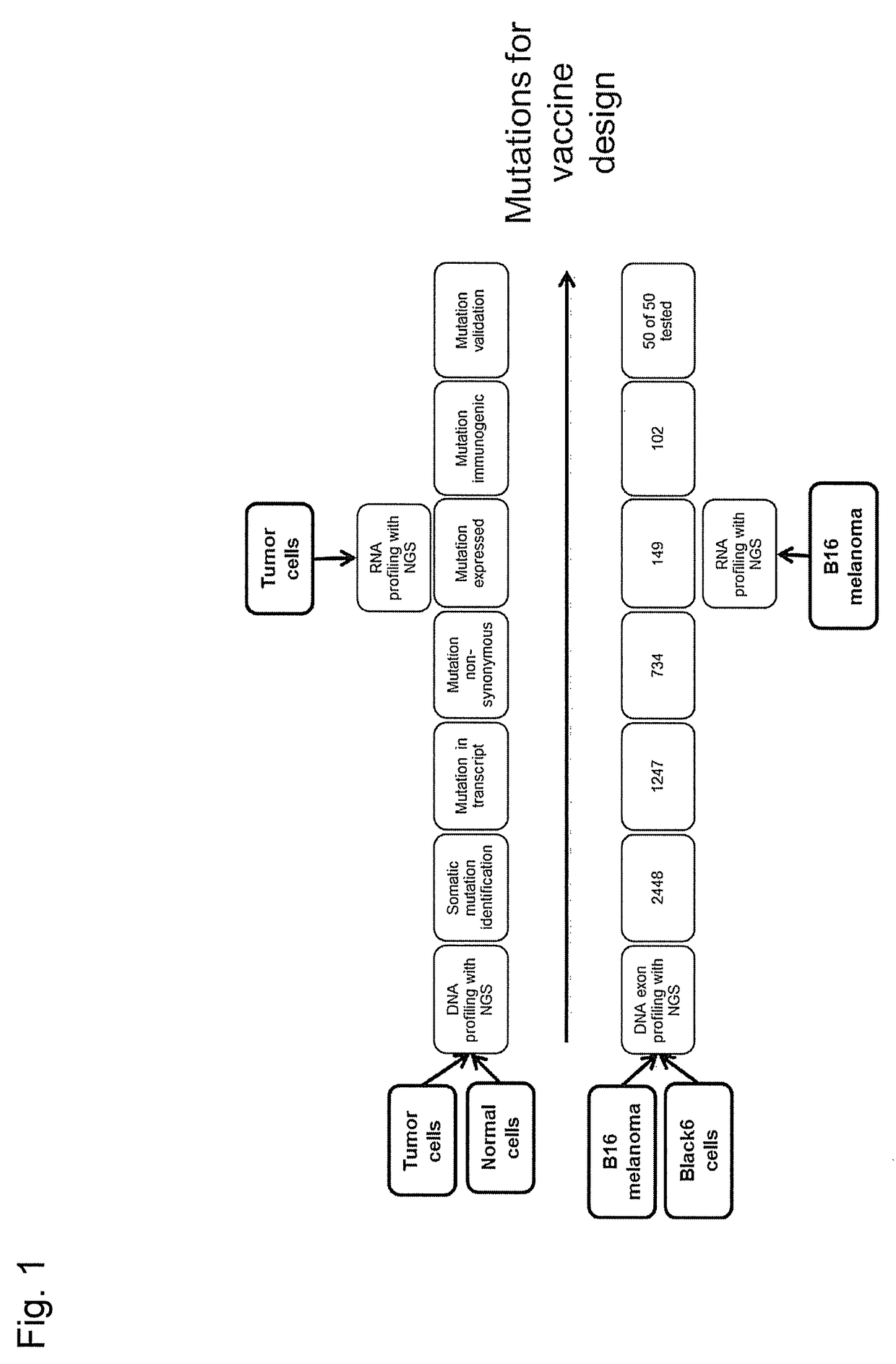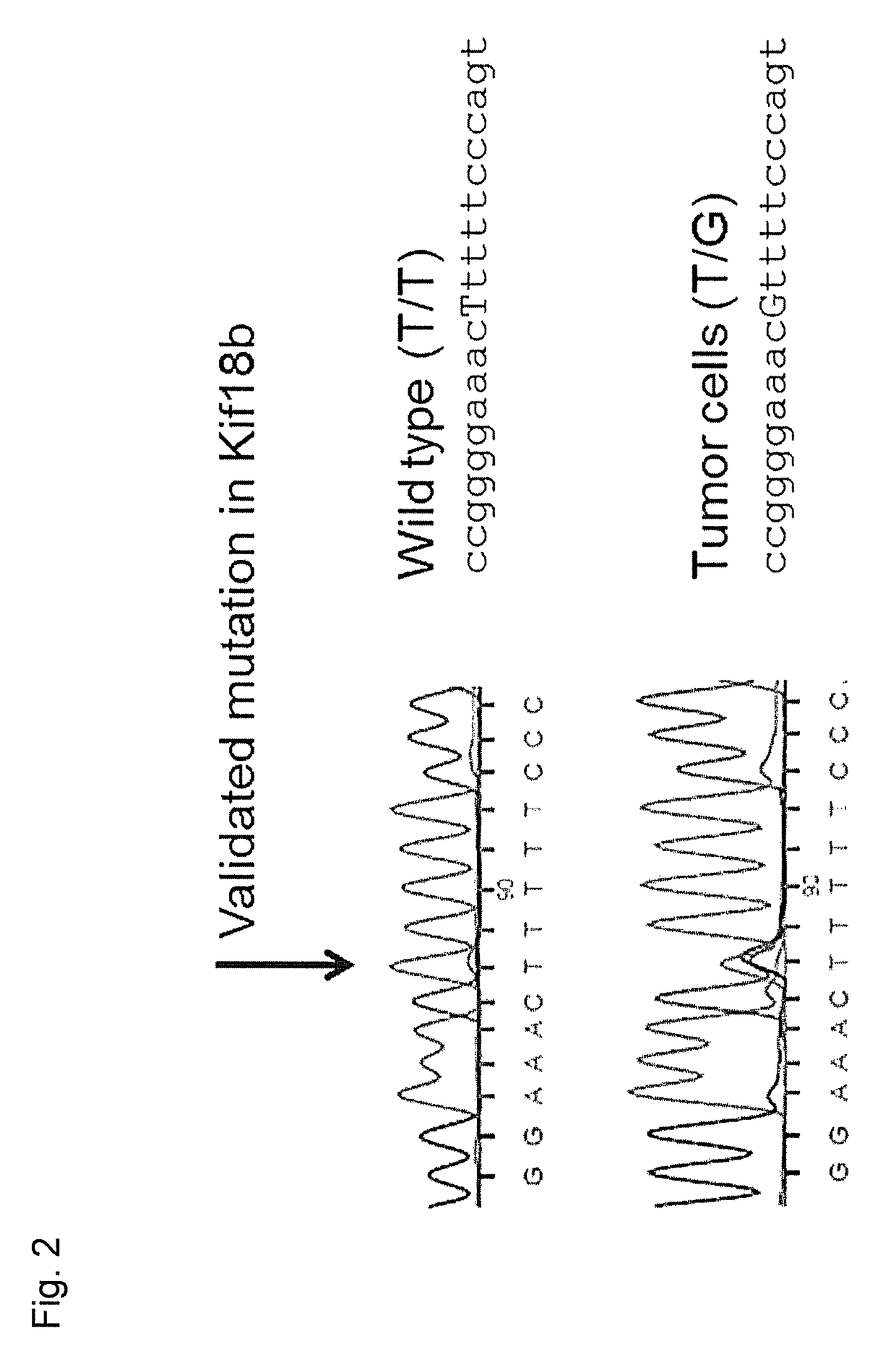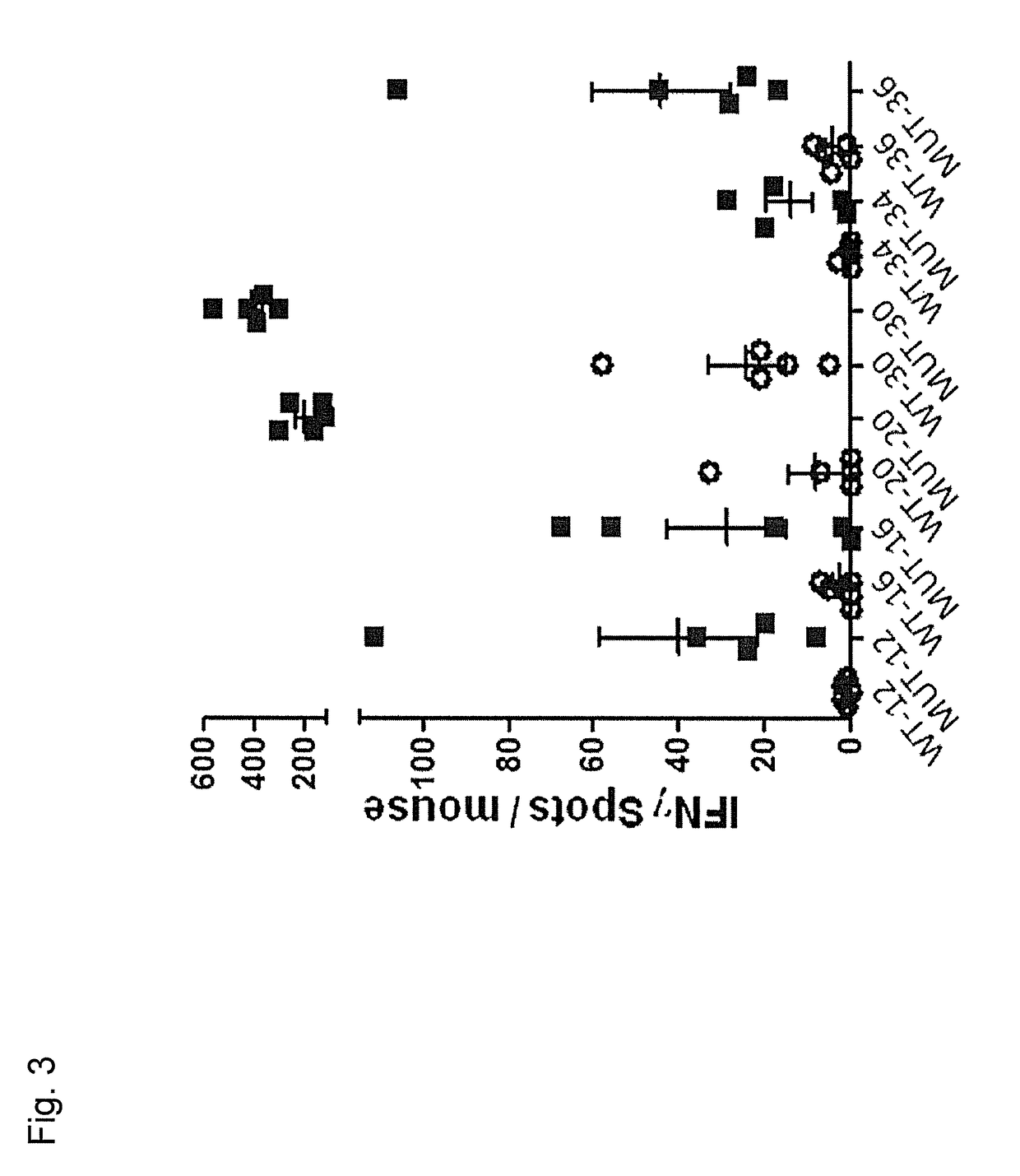Individualized vaccines for cancer
a cancer and individualized technology, applied in the field of patient-specific tumor treatment, can solve the problem that less than 25% of the treated individual profit from the approved therapy
- Summary
- Abstract
- Description
- Claims
- Application Information
AI Technical Summary
Benefits of technology
Problems solved by technology
Method used
Image
Examples
example 1
Mutation Detection and Prioritization
[0333]We first demonstrate sequence profiling of tumor and normal samples to identify somatic mutations in an unbiased manner. We demonstrate this not only for bulk tumor samples but also, for the first time, demonstrate the ability to identify mutations from individual circulating tumor cells. Next, we prioritize the mutations for inclusion in a poly-neo-epitopic vaccine based on the predicted immunogenicity of the mutation and demonstrate that the identified mutations are indeed immunogenic.
Mutation Detection
[0334]The rationale for using CTCs: the detection of circulating tumor cells (CTC) from the peripheral blood of cancer patients is a recognized independent prognostic marker for the clinical course of tumors (Pantel et al, Trends Mol Med 2010; 16(9):398-406). For many years, the clinical significance of CTCs has been the subject of intense scientific and clinical research in oncology. It has been shown that the detection of CTCs in the bloo...
example 2
IVAC Selection Algorithm Enables the Detection of Immunogenic Mutations
[0372]To investigate if specific T-cell responses could be induced against the confirmed mutations from B16F10 melanoma cells, naïve C57BL / 6 mice (n=5 / peptide) were immunized twice (d0, d7) subcutaneously with 100 μg peptide (+50 μg PolyI:C as adjuvant) comprising either the mutated or the wild type aa sequence (see Table 2). All peptides had a length of 27 aa with the mutated / wild type aa at the central position. At day 12 mice were sacrificed and the spleen cells were harvested. As read-out method IFNγ ELISpot was performed using 5×105 spleen cells / well as effectors and 5×104 bone marrow dendritic cells loaded with peptides (2 μg / ml) as target cells. The effector spleen cells were tested against the mutated peptide, the wild type peptide and a control peptide (vesiculostomatitis virus nucleoprotein, VSV-NP).
[0373]With 44 sequences tested we observed that 6 of them induced a T-cell immunity directed against the ...
example 3
Identified Mutations can Provide Therapeutic Anti-Tumor Immunity
[0376]In order to validate whether the identified mutations have the potential to confer anti-tumor immunity after vaccination to naïve mice we investigated this question with the peptide for mutation number 30 that was shown to induce a mutation selective T-cell reactivity. B16F10 cells (7.5×104) were inoculated subcutaneously on d0. Mice were vaccinated with peptide 30 (see table 1; 100 μg peptide+50 μg PolyI:C s.c.) on day −4, day+2, and day+9. The control group received only Poly I:C (50 μg s.c.). Tumor growth was monitored every other day. At day+16 we observed that only 1 out of 5 mice in the peptide vaccine group had developed a tumor whereas in the control group 4 out of 5 mice showed tumor growth.
[0377]The data prove that a peptide sequence incorporating a B16F10 specific mutation can confer anti tumor immunity that is efficiently able to destroy tumor cells (see FIG. 4). Since B16F10 is a highly aggressive tum...
PUM
| Property | Measurement | Unit |
|---|---|---|
| time | aaaaa | aaaaa |
| time | aaaaa | aaaaa |
| time | aaaaa | aaaaa |
Abstract
Description
Claims
Application Information
 Login to View More
Login to View More - R&D
- Intellectual Property
- Life Sciences
- Materials
- Tech Scout
- Unparalleled Data Quality
- Higher Quality Content
- 60% Fewer Hallucinations
Browse by: Latest US Patents, China's latest patents, Technical Efficacy Thesaurus, Application Domain, Technology Topic, Popular Technical Reports.
© 2025 PatSnap. All rights reserved.Legal|Privacy policy|Modern Slavery Act Transparency Statement|Sitemap|About US| Contact US: help@patsnap.com



